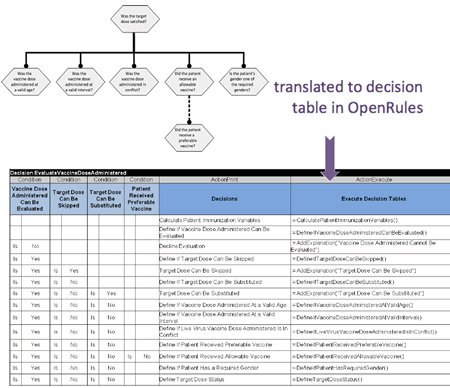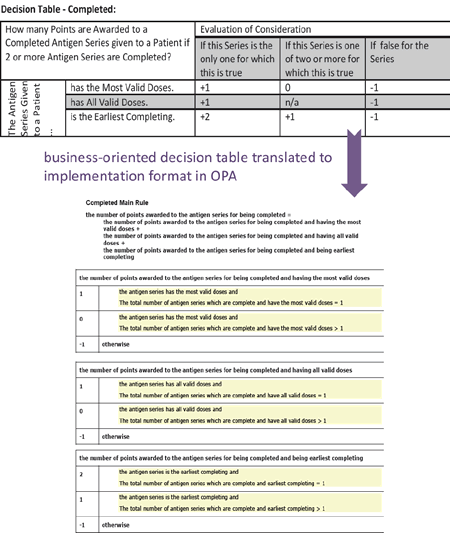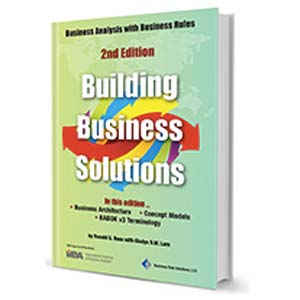Focus on What Makes Your Business Smart: From Interpretation to Implementation Steps 5 - 7: The Technical Steps
Step 5: Map Vocabulary to Data
The audience changes significantly in Step 5. In this step, business analysts need to collaborate closely with data specialists in IT to ensure the right data is used.|
The goals of this step |
|
|
Responsible parties |
|
|
Techniques and methodology |
|
Step 6: Invoke Tool
Business analysts can relax a bit during this step. Technical developers take over and do their magic.
|
The goals of this step |
|
|
Responsible parties |
|
|
Techniques and methodology |
|
As we all know, different implementation platforms implement your solutions differently. What is most important to remember is that if you stay focused on the business needs, you will ensure alignment and accuracy.
The following shows some examples of how the business analysis efforts can be used to validate system development efforts. Keep in mind that the business analysis effort is the same no matter which implementation platform is used. To illustrate this important point, I provide implementation examples conducted by three different vendors:
- OpenRules using OpenRules native technology.
- Oracle using Oracle OPA technology.
- MVC Pro, an independent system integrator adept in rule engine and non-rule engine implementation platforms.

Figure 1. Decision structure translated into decision table in OpenRules.


Figure 2. Decision table translated to implementation format in OPA.

It is not necessary or realistic for business analysts to understand the implementation language. It is, however, important for business analysts to be confident that the rules specified in steps 1 – 4 are implemented as specified. Step 7 enables the business analysts to do that.
Step 7: Execute
Business analysts need to participate in this step to validate the results.
|
The goals of this step |
|
|
Responsible parties |
|
|
Techniques and methodology |
|
Again, deliverables produced in Steps 1 – 4 should be used to validate the results. The following two examples show how different implementation platforms produce results that align with the business analysis conducted.

Figure 3. Outcome as executed by OpenRules.


Figure 4.
Outcome as developed by MVC Pro.

Just Remember…
Plainly speaking, here are some of the main things you need to remember. Business analysts can bring the biggest value to the business by
- focusing on what makes the business smart — including business rules, decisions, and concepts.
- assisting business stakeholders in formulating, extracting, articulating, and analyzing rules.
- using a structured approach that puts the business in the driver's seat all the way from initiation to implementation.
For further information, please visit BRSolutions.com
# # #
About our Contributor:
Online Interactive Training Series
In response to a great many requests, Business Rule Solutions now offers at-a-distance learning options. No travel, no backlogs, no hassles. Same great instructors, but with schedules, content and pricing designed to meet the special needs of busy professionals.











How to Define Business Terms in Plain English: A Primer
How to Use DecisionSpeak™ and Question Charts (Q-Charts™)
Decision Tables - A Primer: How to Use TableSpeak™
Tabulation of Lists in RuleSpeak®: A Primer - Using "The Following" Clause
Business Agility Manifesto
Business Rules Manifesto
Business Motivation Model
Decision Vocabulary
[Download]
[Download]
Semantics of Business Vocabulary and Business Rules